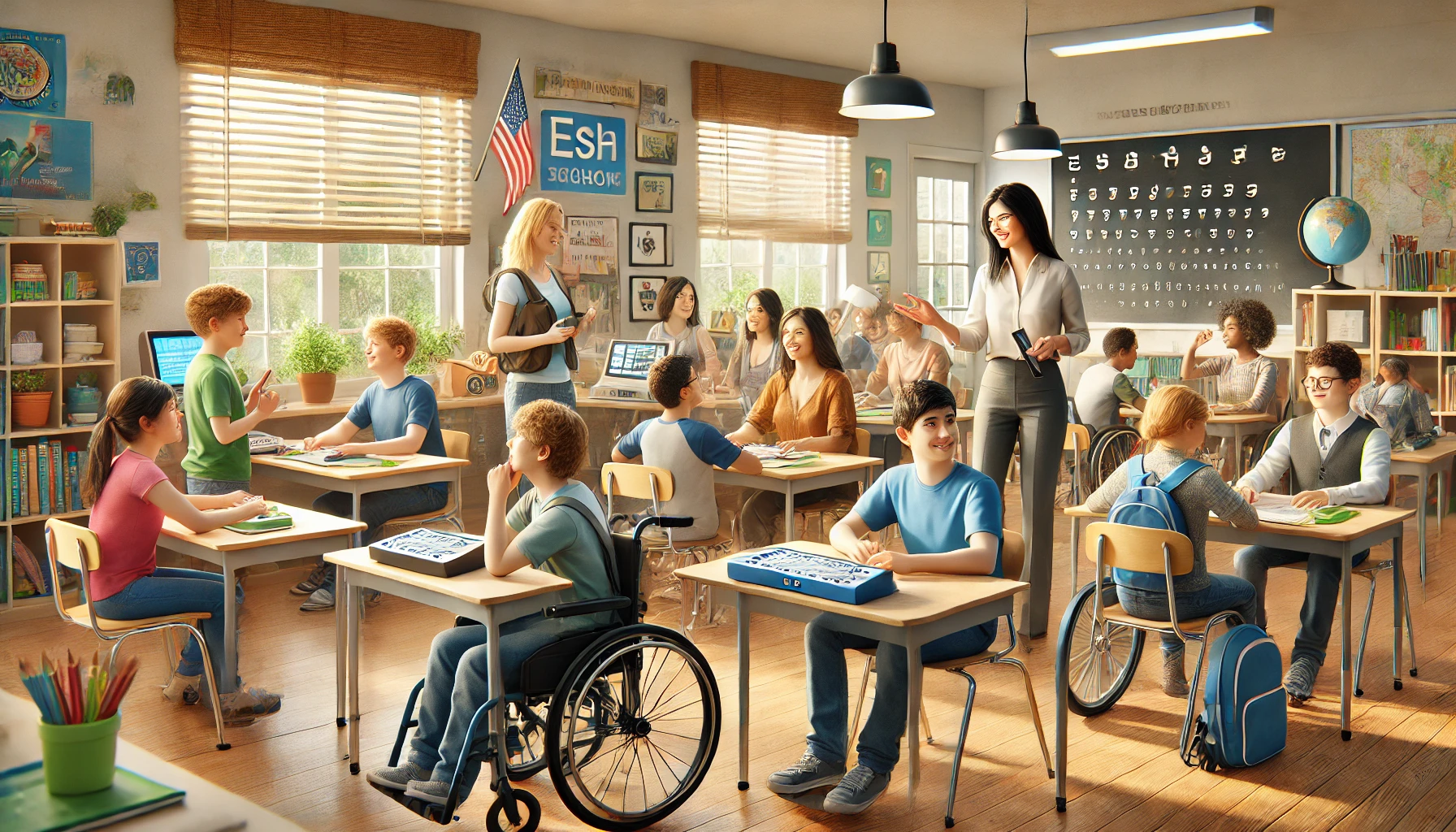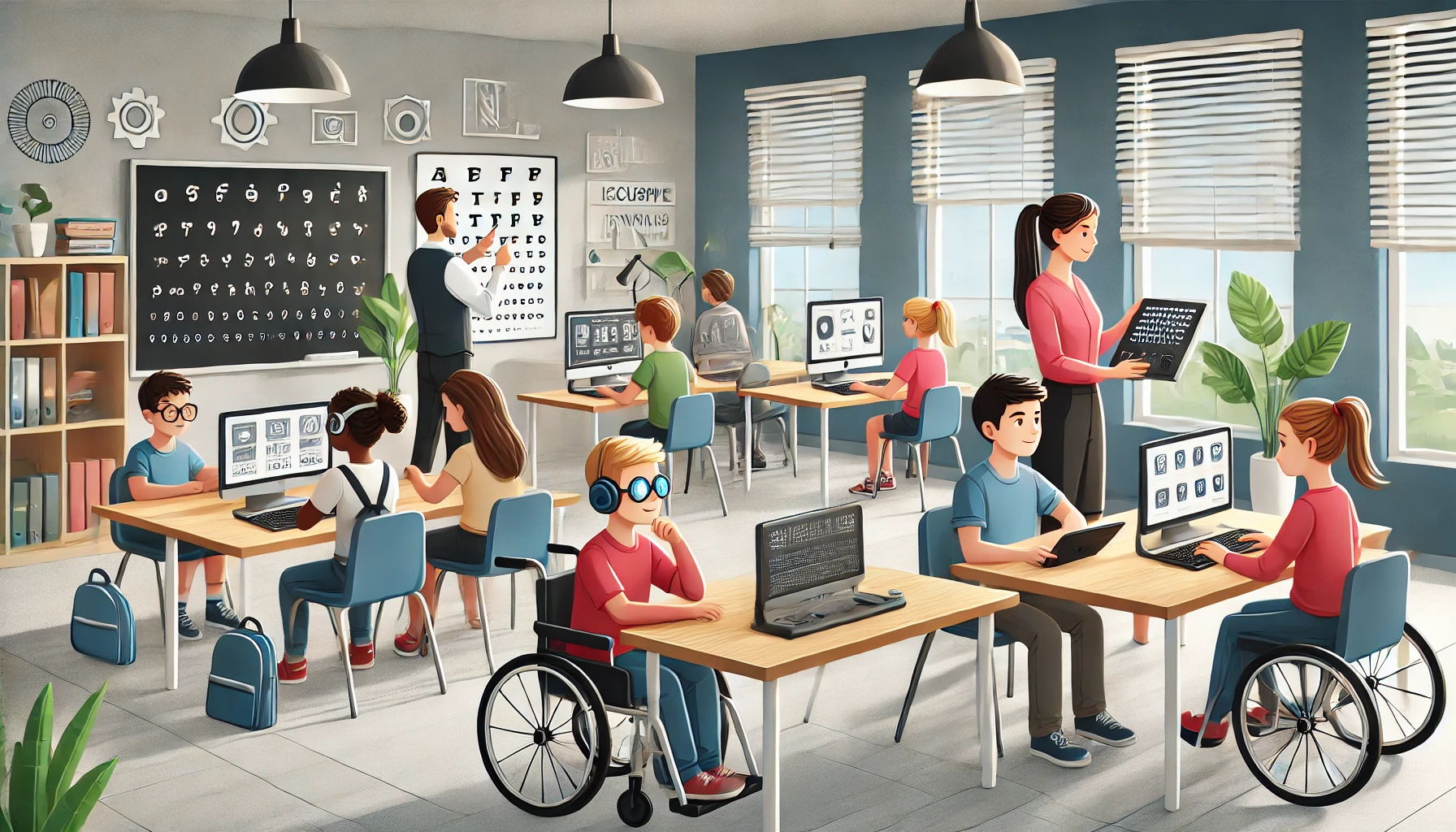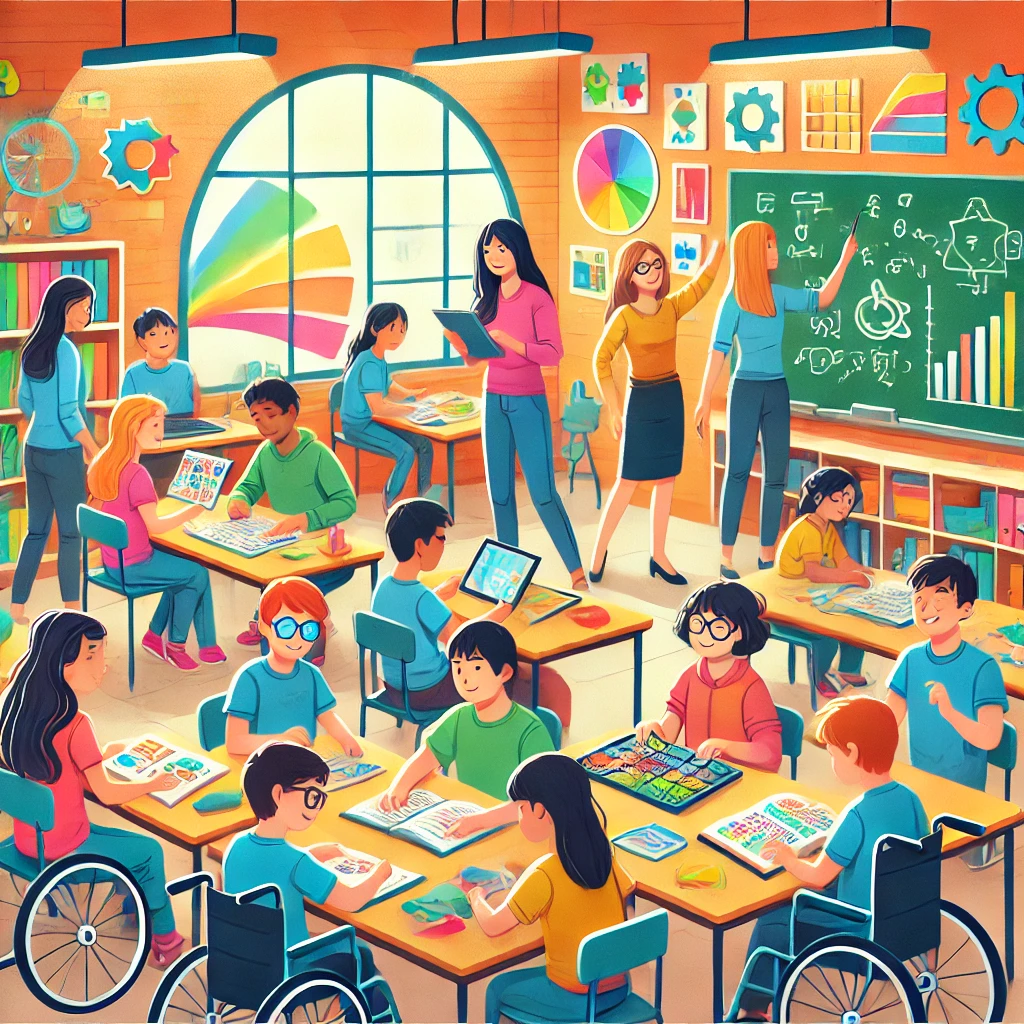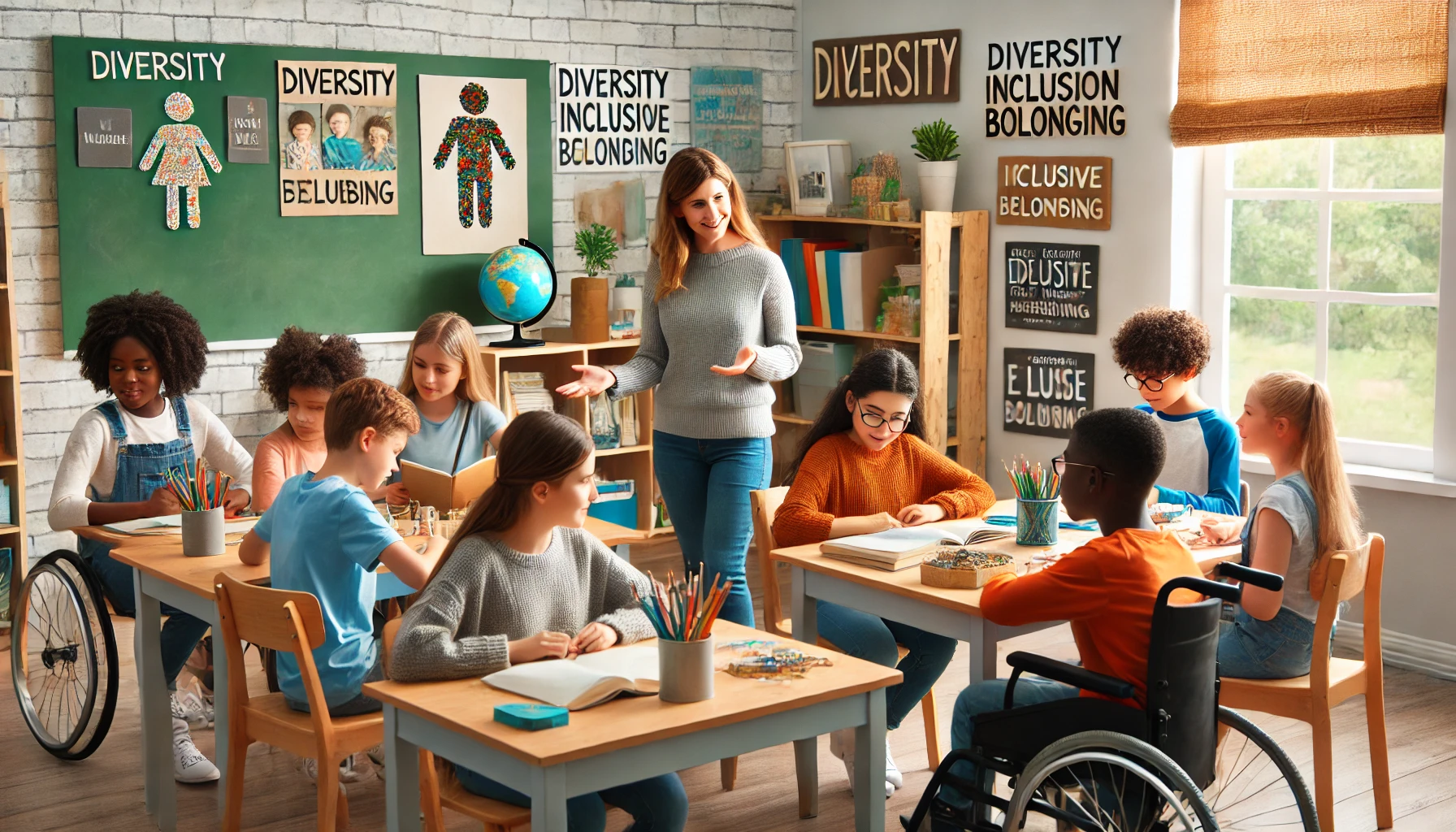Inclusive Education Strategies
Thinking back on my journey through inclusive education, I’ve realized just how much it sets the stage for every student’s success. It’s all about making sure every kid finds spaces that cater to their unique ways of learning and membership in the school community.
Overview of Inclusive Education
Inclusive education isn’t just a fancy idea; it’s a commitment. It brings all kids—whatever their abilities—into one classroom, the right classroom for their age group. Every child and family gets the respect and opportunities they deserve. This kind of setup not only supports learning but also champions diversity, making sure everyone’s quirks are celebrated.
Benefits of Inclusive Classrooms
Look, the positives of inclusive classrooms are clear as day. Kids with and without disabilities benefit a ton. Getting special and general education teachers to tag-team changes the game. They work together, which lifts everyone’s academic performance. Time and again, studies have shown that students with disabilities often outshine in subjects like math when they learn alongside peers in regular classes.
But here’s the thing—it’s not just about acing tests. It’s about these students stepping into the world with confidence. Being in inclusive classrooms means they’re picking up vital social skills, learning to understand emotions, and gearing up for life’s challenges. When students feel like they’re part of a community, they flourish. It’s all because the classroom becomes a mini-world where every student feels celebrated and backed up.
When I ponder the strides we’ve made with inclusive education, it’s a no-brainer that it’s an all-around win. Teachers, kids, the entire network gains. By keeping these practices at the heart of education, we’re setting up a world that values growth and equality for every student out there.
Implementing Inclusive Practices
Alright, let’s chat about making schools a place where everyone feels like they belong, especially when we’re talking about kids who need a bit more help. I’ve got a scoop for you on Universal Design for Learning (UDL), why teaming up to teach is a game-changer, and the superstar role of special education teachers in all this.
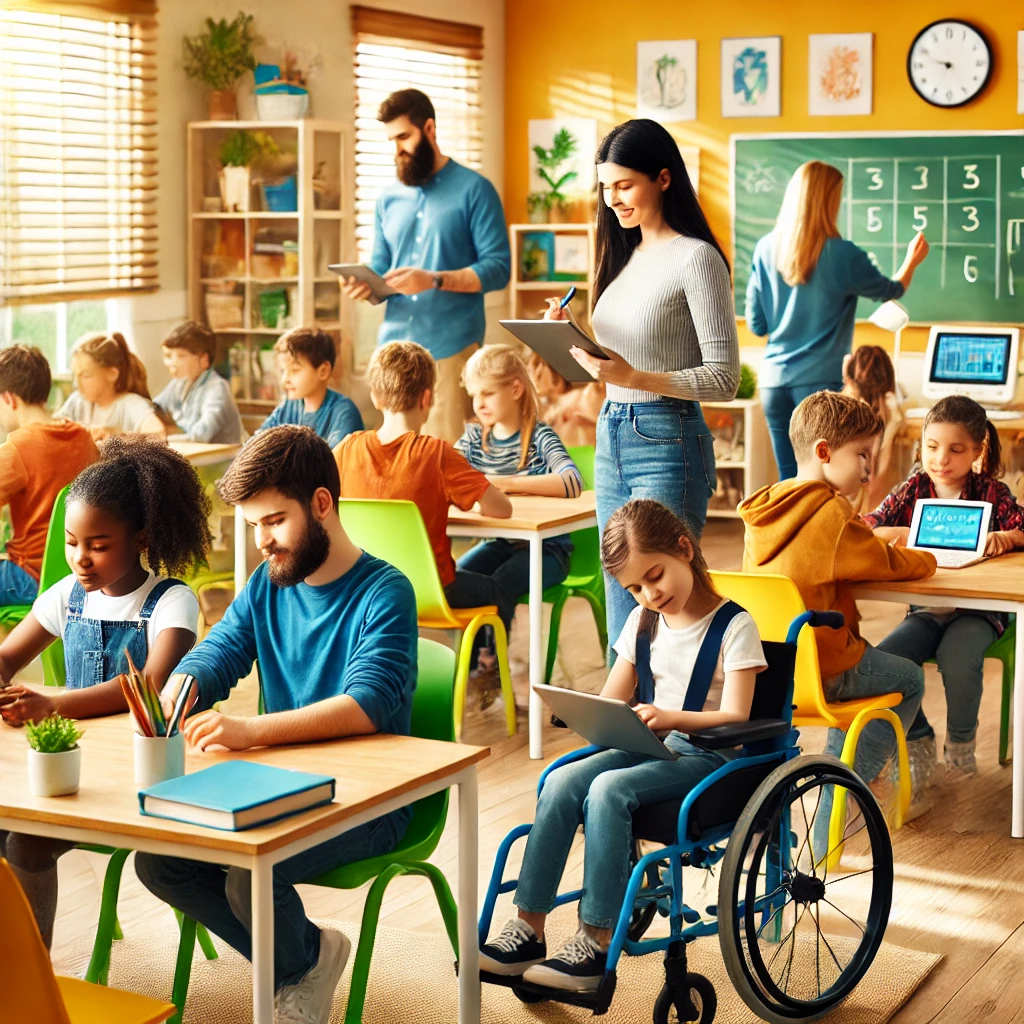
Universal Design for Learning (UDL)
Let’s kick things off with UDL. Think of it as the secret sauce for making classrooms more welcoming for everyone. The idea is simple — build a classroom vibe and curriculum where every kiddo, no matter how they learn, has a fair shot. UDL is all about setting up different ways for kids to get their heads around stuff, lets teachers tweak things to fit each student’s style.
While it’s gold for students with special needs, UDL helps all students thrive. It’s like leveling up the classroom experience to be more friendly and engaging, showing that every kind of brain is welcome and can grow.
Collaborative Teaching Approaches
Now, let’s give a shout-out to teamwork among teachers. When the educators team up, magic happens in classrooms. Studies have shown that when general and special education teachers join forces, all students do better – whether they have disabilities or not. This combo of brains and skills means every student gets the best of both worlds.
Teaming up like this doesn’t just help kids learn more—it builds a strong sense of togetherness. It shows students that everyone is in it together, enhancing their social bonds and creating an inclusive community where each one feels valued.
Role of Special Education Teachers
Special shout-out to the heroes of inclusivity — special education teachers. These folks have the know-how to make learning click for everyone, especially those who need that extra nudge. They work magic by tailoring learning tweaks and support for students with disabilities.
Special education teachers partner with general education teachers to fine-tune teaching strategies and accommodations that fit each student like a glove. By crafting personal learning plans and keeping a close eye on how students are doing, they help kids grow academically and socially.
And it doesn’t stop there; they aren’t flying solo. They team up with speech therapists, support staff, and families to bring it all together. This creates an epic support network that boosts learning vibes for everyone, making sure students with special needs have every chance to soar.
So, wrapping it up, making schools inclusive is like cooking up a perfect recipe. You need a bit of UDL magic, some teamwork among the teachers, and heaps of dedication from special education teachers. When they all do their bit, every student gets to shine in a classroom that celebrates diversity and success.
Creating Inclusive Classroom Environments
I’ve embarked on a fascinating journey exploring inclusive practices, and I’ve realized how essential it is to create classrooms that cater to the different needs of all students—including those with special needs.
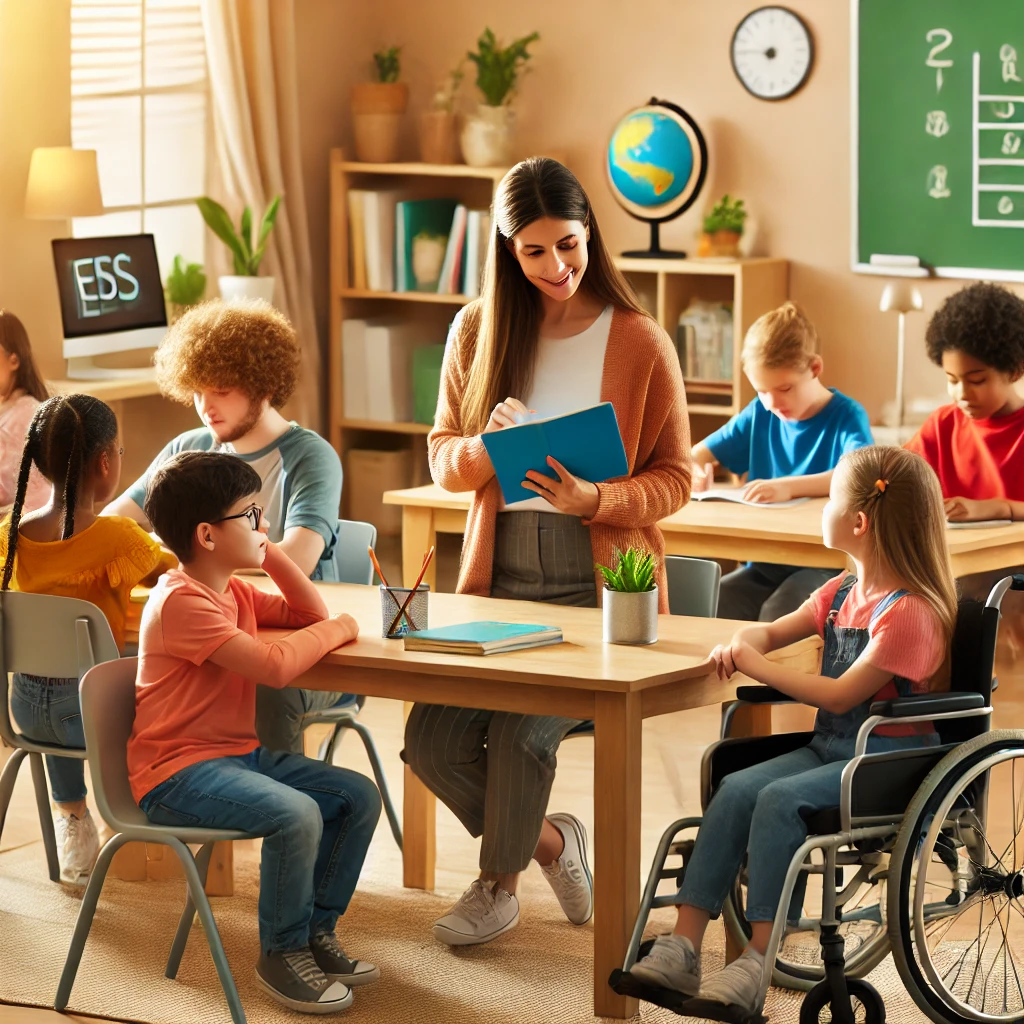
Curriculum Design and Adaptation
Designing and tweaking the curriculum is a big piece of the inclusivity puzzle. The focus here is on breaking down barriers and presenting educational goals in a way that’s fair and interesting for everyone (University of San Diego). By making curriculum tweaks to fit different learning styles, abilities, and interests, teachers can open the door to success for every student.
Teachers should provide a variety of materials and activities that celebrate different learning styles and embrace cultural backgrounds and perspectives. This approach encourages brave thinking in students (Drexel University School of Education). By bringing in teaching materials that reflect a rich array of identities, educators can craft a curriculum that strikes a chord with all students and boosts their sense of belonging.
Teacher’s Role in Inclusivity
Teachers play a colossal role in fostering inclusivity in the classroom. They aren’t just teaching lessons; they facilitate learning, stand by students, and showcase acceptance and diversity (Augusta University). Getting to know each student individually lays the groundwork for a truly inclusive classroom. It’s all about tuning into their unique backgrounds and perspectives, giving them a stage to share their stories and viewpoints with peers (Drexel University School of Education).
Creating a classroom vibe of safety and respect is crucial for inclusivity. By encouraging students to build personal bonds and promoting empathy and teamwork, teachers can create a comfy and welcoming space for all.
Promoting Communication and Social Skills
In inclusive classrooms, boosting communication and social skills is key to building a community where everyone feels valued and acknowledged. Encouraging student interaction enhances classroom inclusion, strengthens ties to the school community, and ups student buy-in to their education.
Activities like icebreakers, mixed-group projects, and guided group activities can kickstart student interactions and help everyone feel they belong. With a focus on communication and social skills, educators can shape a learning space where diversity is celebrated, and every student has a voice.
Promoting Inclusive Learning
Reflecting on my experiences with inclusive education, I’ve found that creating a space where students feel engaged, using diverse teaching materials, and nurturing a positive school culture are all game-changers for successful inclusive practices.
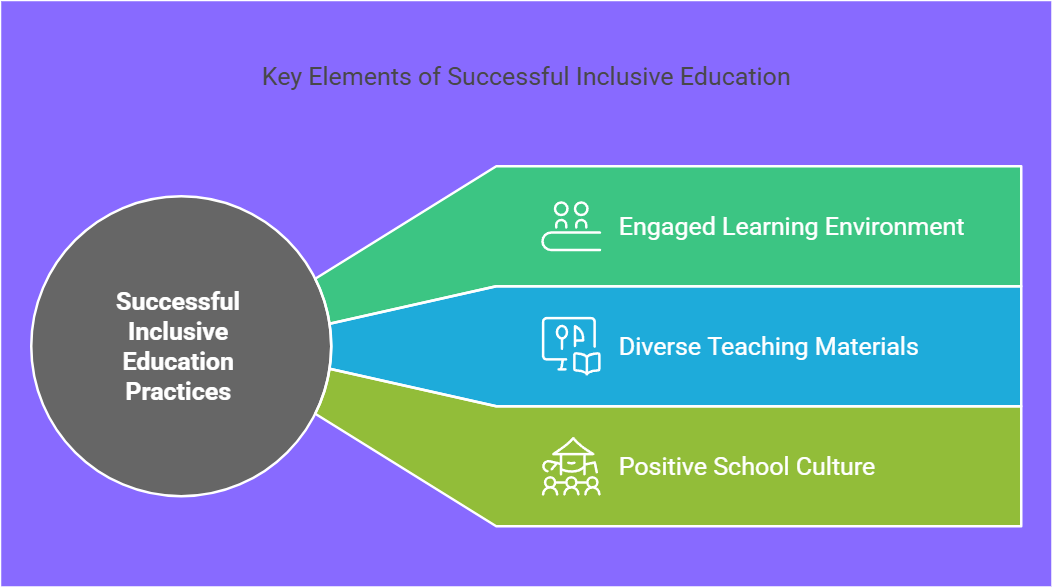
Encouraging Student Engagement
Getting students involved in their learning is key to building an inclusive classroom. It’s about having students interact with each other, creating a vibe where everyone feels they belong and can learn from different perspectives. Whether it’s a fun ice-breaking game, group work that mixes things up with diverse students, or well-thought-out group activities, these strategies help students connect. When students share their stories and viewpoints, it makes the classroom a lively place where everyone feels their voice matters.
Diversity in Teaching Materials
Introducing diverse teaching stuff is a powerful method in inclusive education—it speaks to the varying needs and learning vibes of all students. By setting learning goals in a fun and easy-to-access manner, we can challenge the norm and clear obstacles to learning. Picking books and materials that show different backgrounds and experiences isn’t just about representation; it’s also about growing empathy and understanding among students (inclusive education curriculum). With a mix of academic and beyond-the-book resources, we make sure every student gets the help they need to shine in an inclusive setting.
Building Positive School Culture
Building a welcoming school atmosphere is what inclusive education is all about. Forming real connections with students and celebrating their progress makes a tight-knit community where everyone fits in (inclusive educational environment). It’s about really understanding each student, their backgrounds, and their views, which helps us adapt our teaching to suit them. In these inclusive school settings, students feel appreciated and fully part of the community, which means less skipping class and acting up because they’re truly engaged in their education journey and the learning group.
Through my commitment to promoting inclusive learning, I’ve seen how making students feel involved, using a variety of teaching tools, and fostering a positive school environment can turn a classroom into a place where all students can shine and reach their potential. Adopting these practices helps us keep shaping a future where every student has the chance to succeed.
Enhancing Inclusive Education
Thinking back on my own path with making education more inclusive, I’ve come to see how crucial it is to improve it through different approaches. By zeroing in on handy resources and helpful adjustments, teaming up with others, and building policies that champion inclusion, we can really make a difference in learning for every student, including those with unique challenges.
Accessible Resources and Accommodations
Making sure there are resources and adjustments that work for students with disabilities is the bedrock of welcoming everyone in classrooms. By offering the right kind of support, we make sure every student can tap into learning opportunities, meeting them right where they are. These tools open doors, allowing students to dive fully into learning and shoot for the stars.
Collaboration and Networking
Working together with a wide array of folks—from special ed pros to speech therapists, support staff, and families—is what makes inclusive education tick. By building solid connections with educators who care about inclusion, we can swap ideas, share resources, and learn from each other to make a bigger splash together. This team effort allows us to mix and match our skills to make a cozy, supportive scene that grows inclusive habits.
Policy Development for Inclusivity
Holding onto inclusivity in school settings means setting up rules that actively push for fairness and knock down hurdles for students from all walks of life. These rules need to be carefully thought out so they support inclusivity in every corner, like activities, language usage, and discipline. By building policies with inclusivity in mind, we craft an environment where every student feels appreciated and part of the mix.
As I keep pressing on in my efforts towards more inclusive education, I’m set on boosting inclusivity through win-win resources, strong partnerships, and cleverly designed policies. By focusing on these, we can mold a place of learning where each kid, no matter their skills or background, feels encouraged to learn, grow, and shine.
Student Outcomes in Inclusive Education
When you dig into what makes inclusive education tick, the results are truly heartening and go beyond just grades on a paper. Kids learn more than algebra—they gain social skills, emotional intelligence, and are better set for the wild world of college and careers.
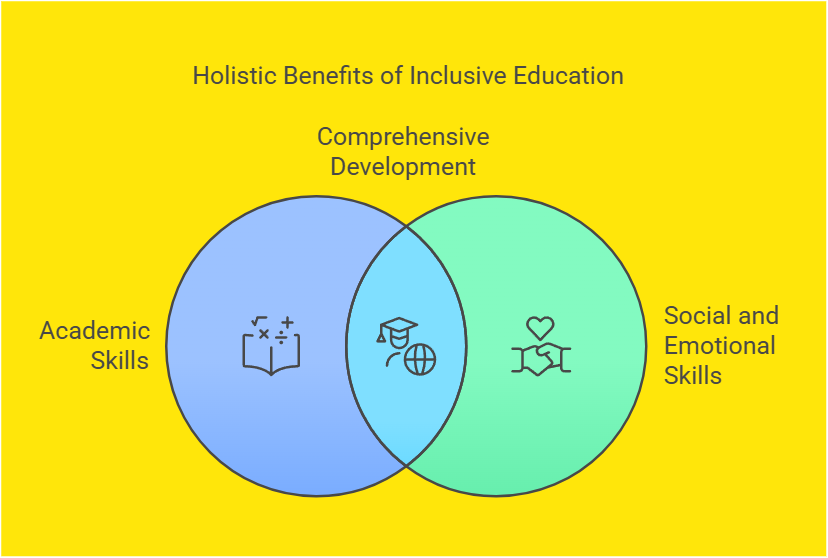
Academic Achievements in Inclusive Settings
Mixing up teaching styles by throwing in inclusive classroom methods pays off big time, not just for students who happen to have disabilities. Everyone benefits, it’s like a win-win scenario. When kids learn to chat better and show up on time, with fewer blow-outs, everyone starts to notice the positive vibe. Having special and general ed teachers tag team in the classroom has also been a game-changer. It’s shown to send students—whether they have disabilities or not—to new heights, especially in math. Those who learn within the general crowd catch onto things a bit quicker.
Recent numbers tell us something pretty neat, too. Classrooms that welcome everyone are seeing 6% more students walking the graduation stage. That points to inclusive setups giving students a bit of a boost towards the finish line.
Social and Emotional Development
When schools open their doors to every student, something special happens on the inside with hearts and minds. Kids who learn together, irrespective of differences, tend to be kinder and less anxious. Data from the National Center for Education shows these integrated environments help kids score empathy points and dodge depression. They’re growing up not just smart but with hearts in the right place.
Graduation Rates and College Preparedness
By making sure everyone’s part of the classroom crew, schools are setting up students not just for the tassel-turning day but for life beyond. Research from Indiana University backs this up, showing that students with all sorts of abilities in inclusive settings outperform those who aren’t in such spaces, especially when it comes to tough tests like state exams. They’re stepping into college and jobs with more confidence and preparation under their belt (Augusta University).
So, when we pack a classroom with diverse learning styles and kids from different walks of life, we’re doing much more than teaching; we’re opening up paths for a brighter future. The mix of educational success, emotional growth, and smarter readiness for the next steps guarantees a wholesome educational trip and better days ahead for these students.

